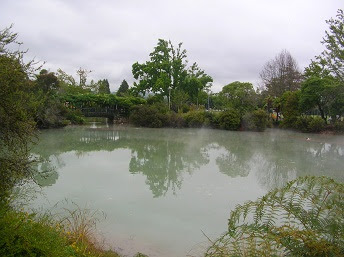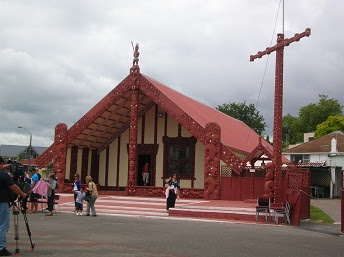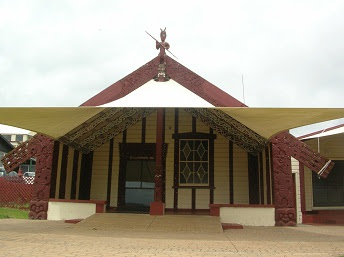Rotorua is well known for its tourism activity. If you come to Rotorua, you shouldn't be bored as there're many attractions and places you can visit. Together with two friends, I went to visit Rotorua on the day leaving Te Puke on Christmas and we spent a few days there. Same as Te Puke, Rotorua is sited in the Bay of Plenty region too.
There’re a number of remarkable buildings sited in the heart of Rotorua, Rotorua I-Site Visitor Centre, Old Post Office and The Bath House (Rotorua Museum of Art and History) to name a few. They’re some of the great sites for photography.
 |
| I-Site Information Centre |
 |
| Old Post Offcice |
 |
| Museum of Art & History |
Situated at Queens Drive, the Museum of Art and History was built with its astonishing garden landscape, the Government Gardens. The urban park is closed to the lakeshore and it offers thousands of flowers and plants for visitors to enjoy.
Rotorua is distinctive with its geothermal nature, such as the hot thermal springs and mud pools. So it's a place worth your attention while you're here. You could visit free at the informal Kuirau Park which is next to the city centre. The park enables you to see the bubbling geothermal pools, steaming lakes and some garden areas. You’ll find the ‘rotten eggs’ odour around the area due to the release of hydrogen sulphide.
 |
| A steaming lake |
 |
| Most of the active geothermal areas were fenced for visitors safety |
Pix-Star 10.4 Inch Wi-Fi Cloud Digital Photo Frame FotoConnect XD with Email, Online Providers, iPhone & Android app, DLNA and Motion Sensor (Black)
 |
| A small bubbling geothermal pool |
 |
| The water of the pool is bubbling and extremely hot |
 |
| A small mud pool |
.JPG) |
| A mud pool was bubbling & steaming |
Kuirau Park
Location: Ranolf Street, Rotorua 3201.
We had witnessed a great influence of Maori culture in the Ohinemutu Village. The Maori village was an important hub in the past but now it becomes one of the suburbs of Rotorua city.
Location: Ranolf Street, Rotorua 3201.
We had witnessed a great influence of Maori culture in the Ohinemutu Village. The Maori village was an important hub in the past but now it becomes one of the suburbs of Rotorua city.
From the village, the Maori arts can be viewed through the details of the architecture and the most prominent building is the Maori Meeting House.
The interior of meeting house was designed with intricate carving and shiny paua shells. Today, the building is still important to the local Maori community.
Besides the public settings, we also paid a visit to some charged tours such as the Agrodome, Rainbow Spring and Tamaki Maori Village. I’ll share them on my coming posts, so stay tune!
 |
| Panorama at the village with lake and mountain background |
 |
| The cementary area in the village |
From the village, the Maori arts can be viewed through the details of the architecture and the most prominent building is the Maori Meeting House.
 |
| Maori Meeting House |
The interior of meeting house was designed with intricate carving and shiny paua shells. Today, the building is still important to the local Maori community.
Besides the public settings, we also paid a visit to some charged tours such as the Agrodome, Rainbow Spring and Tamaki Maori Village. I’ll share them on my coming posts, so stay tune!
.JPG)


.JPG)





